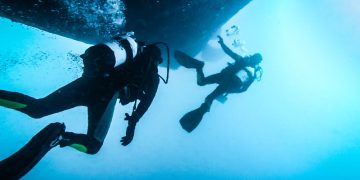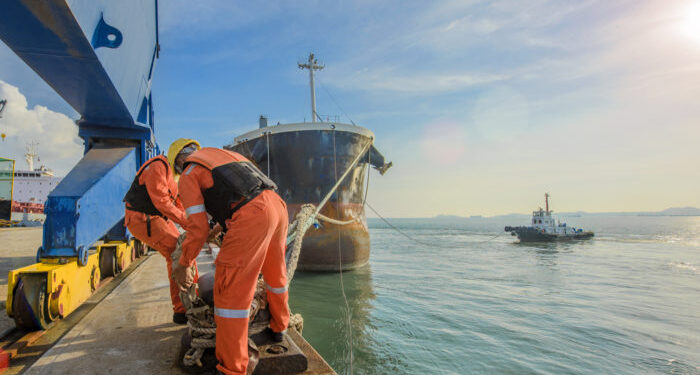Mooring and unmooring operations hide a number of risks for those who get involved, many times leading to a fatal accident or a collision; Thus, it is of a great importance when conducting any mooring operation to follow specific steps to ensure the safety of all those conducting the operation.
#1 Use Appropriate Lines
a. Choose based on size and operational requirements
Choosing the ideal mooring lines depends on local factors such as the water depth, the tidal range and wave energy, as well as on the material the mooring lines are constructed from.
The combination of both the material and the conditions where a vessel is to conduct its mooring operations, play a crucial role for the operation to be fruitful.
When opting for the mooring line keep in mind the:
- Weight and diameter of the line in comparison to required strength.
- Elasticity of the material.
- Durability including resistance to high temperature, strong sunlight or chemicals.
- Whether the lines will float or not.
- Required maintenance including method and ease of repair.
- Availability of replacement lines in vessels expected trading area.
b. Log new lines and know their exact position
When acquiring new mooring lines, it is vital to report them and know their exact position on the vessel. This can be easily achieved by keeping a log in which you may include the position for each line on board, manufacture date, date of first use on board and hours under tension.
#2 Set an inspection system
Ensuring the ideal mooring operation, it is important to follow the steps below:
- Calculate Estimated Life Expectancy
- Set Retirement Criteria
- Set Intervals for Routine, Detailed Inspection
- Request 3rd-party assistance for Inspections
- Residue Strength Testing
[smlsubform prepend=”GET THE SAFETY4SEA IN YOUR INBOX!” showname=false emailtxt=”” emailholder=”Enter your email address” showsubmit=true submittxt=”Submit” jsthanks=false thankyou=”Thank you for subscribing to our mailing list”]
Inspections and maintenance should be conducted strictly according to the manufacturer’s instructions and be carried out by an expert. In that case, the vessel has the chance to request for 3rd party assistance.
In addition, under the possibility that any damaged, defective or unserviceable piece of mooring equipment is found during inspections, it must be taken out of service and be either replaced or repaired.
#3 Plan operation
Another step to be taken prior to beginning the operations it is to exactly plan the procedure, creating a mooring plan based on mooring position, the area and the environmental conditions.
Also, the plan should be clear on the number of the lines that are going to be used in mooring and the crew in charge of the operation should assess the situation.
#4 Toolbox meeting
The toolbox meeting is a crucial step, not to be avoided, as those participating will in detail analyze the plan, the potential challenges and what mitigation measures will be followed.
Moreover, the meeting will provide safety instructions for those who will conduct the operations, so in case of emergency they will be able to handle the situation, and highlight that all mooring area is a snap-back hazardous area, meaning that all crew should be extra cautious during mooring.
David Nichol, Senior Loss Prevention Executive, UK P&I Club, speaking at a 2019’s SAFETY4SEA Forum commented that
Mooring and more particularly the handling of mooring ropes is an ancient skill that has adapted to larger ships and scaled up mooring machinery, but the basic risks and exposure to hazardous situations remain.
#5 Execute operation
Following the preparations, the plans and the alerts on the risks of mooring, the time has come when the crew has to provide the lines to shore party.
During the operation, it is vital to always have in mind the hazards and provide clean instructions to all parties, so that everyone is aware of their exact place and responsibility.
Keep in mind that communication is the key during operations, as all parties should follow orders and be informed during the execution of mooring.
In case of an abnormal situation, if something seems out of the plan, the crewmembers have to report it, so that it is rapidly handled, and any potential accident is prevented.
#6 Post operation activities
After the vessel is safely moored and secured in a place, the crewmembers have to secure all lines, put everything back in place – as housekeeping is essential onboard a vessel – and then carry out the debriefing of a team.
During the debriefing the safety officer should debrief the crew referring to all stages of execution, as the crew should have regular follow ups on what they could improve in the operation; The debriefing, additionally, gives room for additional discussions on safety issues that were detected during mooring operations.
- During mooring operations “snap-back” is the sudden release of the energy stored in a tensioned mooring line when it parts as the mooring line reverts to its original length. The two ends of the line recoil or snap-back towards or past their secured ends. When a synthetic mooring line breaks, the snap-back effect can be extremely powerful and the rope ends may reach a high velocity as they recoil. Anyone standing within the snap-back zone at either end of the line risks serious injury or death.
- OCIMF’s MEG-4 includes new terminology, due to the confusion in the shipping industry with the term ‘Minimum Breaking Load’ (MBL); It is the core parameter against which all the other components of a ship’s mooring system are sized and designed with defined tolerances.
MOORING PROCEDURES: Read in this series
[smlsubform prepend=”GET THE SAFETY4SEA IN YOUR INBOX!” showname=false emailtxt=”” emailholder=”Enter your email address” showsubmit=true submittxt=”Submit” jsthanks=false thankyou=”Thank you for subscribing to our mailing list”]







































































essay for safe and unsafe on mooring operation